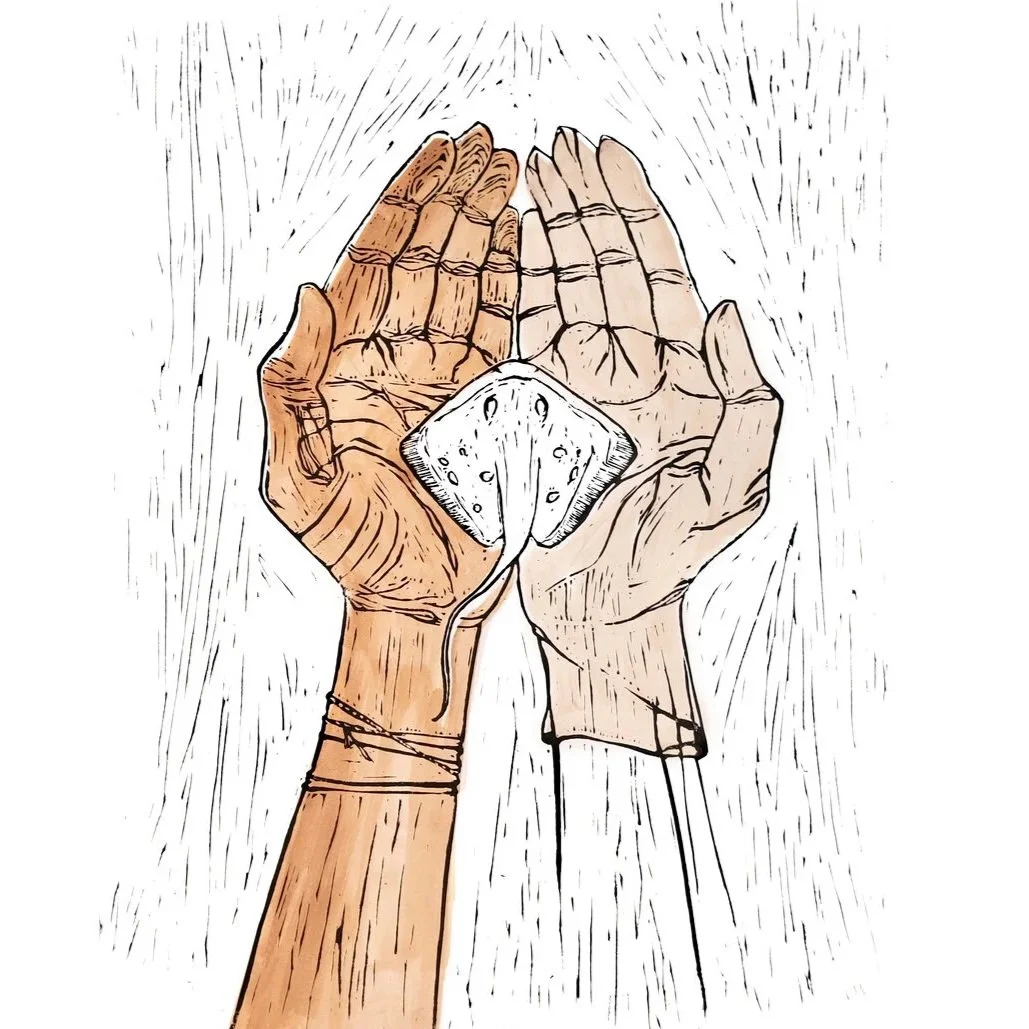
Ray Conservation
Presented by Artist, Sofiya, Shukhova
"I felt like the happiest person in the world when I saw rays in the wild. This happened to me only once, but I can hardly count all those times when I saw rays being on a menu in various restaurants. From a luxury restaurant in Russia to a food-court stall in Singapore: they are being sold all over the world. Scientists are working hard to study rays and their trade, but everyone else can also play their part in protecting these magical creatures, and artists are no exception.”-Sofiya Shukhova
WHY ARE RAYS IMPORTANT?
Rays are forgotten cousins of sharks, and just like sharks, they play an important role in the aquatic food chain. Rays are critical to balanced marine ecosystems.
With more than 600 recognised species, rays have diverse shapes, behaviours and habitats, many of those features are still to be studied by scientists and to shape our understanding of the world.
Rays have an important cultural value for many nations, including Indigenous people of Australia.
Rays are traded as food, medicine, for their skin (leather) and to be used in the entertainment industry. Although most of us could easily exclude rays from our diet, medicine and fashion, other people’s livelihood directly depends on rays.
With the growing ecotourism industry (before Covid-19), large ray species became one of the ‘animals to see’ for divers and snorkellers, providing an additional money flow to the tourism industry.
WHAT ARE THE CHALLENGS FACING RAYS?
Many ray species are still not assessed on the IUCN Red List of Threatened Species, which means that we do not know their conservation status and whether they are facing extinction.
Rays are caught and traded both legally and illegally for food, medicine and leather. Overfishing leads to population decrease of multiple ray species.
Rays are affected by the seafood industry as they can easily become victims of by-catch. They are also targeted, such as for local delicacy BBQ stingray in Singapore.
Plastic pollution negatively affects rays’ habitat and exposes them to plastic-associated toxins through micro and nanoplastic ingestion. Ghost nets cause ray and other species entanglement, which can lead to injuries and/or death.
Human activities, including fishing, diving and snorkelling, can cause distressed behavioural changes of ray.
Habitat degradation and prey loss affect rays directly due to their distribution and position on the middle to top levels of the aquatic food chain.
Climate change can also negatively affect rays.
WHAT CAN WE DO TO HELP?
Study Rays
Learn more about rays by reading books, studying scientific papers, and watching documentaries about their biology and behaviors.
Read about threats that rays are facing in conservation organisations’ reports and academic research.
Follow ray scientists and conservation groups on social media.
Be mindful of what you read and watch, some writers do not use science-based information.
Celebrate Rays
Introduce your family, friends, and colleagues to these magical creatures. Use fun facts to spark interest in rays among kids.
Support artists who create art about rays.
Create your own artworks about rays and share them with the world. Use #CreatureConserve #RayArt hashtags when posting them online.
Protect Rays
Question your food choice. If you are a restaurant owner or a chef, make sure you know how and where your seafood comes from and its implications on rays. If you are a customer, let your favorite eateries know that you would prefer to remove rays from the menu.
Question the environmental impact of the medicine you use. Avoid consuming ray gills.
Say no to fashion products made of ray leather.
Reduce your plastic waste or even better - go zero-waste.
Donate to organizations supporting ray conservation and research.
Push for a better ray trade regulation by writing well-researched letters and articles in support of ray conservation.
Artworks by Sofiya Shukhova
